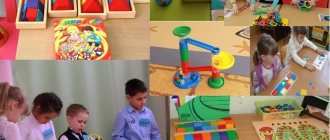Greetings, friends!
Cognition is a complex cognitive process to which we owe all the achievements of human civilization. This amazing natural phenomenon interested the ancient sages even before the advent of philosophy. And today it is the subject of study of epistemology, cognitive psychology and many other sciences. In this article we will focus on the forms of cognition, but to make it easier for you to understand them, let's first briefly look at what cognition is. So,
What is cognition?
Cognition is a set of processes and methods of obtaining knowledge about the world around us. This is a broad concept that covers both the natural desire to find a rational explanation for the processes occurring around us, and artificially created methods for obtaining and accumulating knowledge. People tend to strive to explain every phenomenon of the world around them, and it is this desire that is considered the main factor in the emergence and development of human civilization.
Cognition has a complex structure, with five main structural elements fundamental to it:
- Subject. This is the one who gains knowledge by putting some effort into it. Any person reading a book or article on the Internet, conducting experimental observations or performing theoretical calculations is at this moment a subject of knowledge.
- An object. This is what cognitive activity is aimed at. For example, for readers of this article, the object of knowledge is knowledge itself as a concept and phenomenon.
- Motive. This is a factor that causes a craving for knowledge, for example, interest. The motive can be practical (the desire to obtain a higher education and secure career prospects) or theoretical (deriving pleasure directly from the process of learning). A person is guided by theoretical motives, for example, when reading an article about string theory or the structure of the universe. This process brings pleasure from learning, although it does not provide knowledge of practical value.
- Target. Purpose and motive should not be confused. The goal of cognition is to obtain complete, accurate and reliable knowledge about the object being cognized.
- Result. The result of knowledge is knowledge itself. It is worth noting that the result is sometimes achieved even without intentional cognitive activity. For example, a child gains knowledge the first time he falls and breaks his knee, the first time he gets burned, hurts his finger, or gets a splinter. He definitely does not seek such experience, but he gains knowledge.
Principles of organization of perception
The process of perception is realized according to certain laws, which in psychology are established in the form of principles for the organization of perception. These include:
- principle of proximity. Based on the joint perception of objects located close in space and in adjacent time intervals;
- principle of continuity. It is based on the perception of elements that we observe in a specifically established sequence and direction of action;
- principle of similarity. Based on the collective perception of objects, by establishing similarities between them;
- closure principle. It involves perceiving objects by completing them, if they are unfinished or have some gaps or shortcomings;
- principle of simplicity. Everything that we perceive, regardless of the complexity of the object and its structural structure, is divided into simple component elements, i.e. we do not perceive a complex object as a whole, but consider it as a set of its simple components, each of which plays a significant role for its integral perception.
Get paid for your student work
Coursework, abstracts or other works
Forms of knowledge
There are two main forms of cognition : sensory (that is, based on feelings and sensations) and rational (based on thinking). Let's look at each form in detail.
Sensory cognition
The main mechanisms of this form of cognition are vision, hearing, touch, taste and smell. At the same time, sensory knowledge itself has three levels:
- Feeling. This is a process that occurs in the senses under the influence of external influences and allows one to understand certain properties of a cognizable object or phenomenon (shape, color, taste, temperature, etc.).
- Perception. This is an interpretation of sensory data (sensations), representing a holistic image of an object, process or phenomenon.
- Performance. This is a reproduced image of an object, process or phenomenon, formed in the imagination on the basis of existing experience and preserved in memory. For a representation to arise, there is no need to influence the senses at the current moment in time.
Sensory cognition is subjective and not highly accurate. And yet it is precisely this that underlies all human cognitive processes. Intuition is also a type of sensory cognition . This phenomenon lies in the fact that a person comes to certain conclusions based on a certain internal sense of self. At the same time, he is guided not by logic and meaningful reasoning, but exclusively by feelings and premonitions. Like other forms of sensory cognition, intuition is very subjective.
With sensory cognition, knowledge is obtained directly from the senses and without additional processing may be inaccurate or incomplete. For example, if there is a spoon in a glass of water, refraction causes it to appear curved. Therefore, in order to accurately understand its form, the image obtained through sensory perception must be subject to rational comprehension.
Rational cognition
Knowledge built on consistent reasoning in compliance with the laws of logic is called rational. It is carried out by the mind, and not by the senses (which is why it got its name from the Latin word ratio, which is translated as “reason” or “reason”). In this case, methods such as comparison, measurement, assimilation and generalization are used. It is generally accepted that rational knowledge is inherent only to humans, while animals rely exclusively on sensory knowledge.
Forms of rational knowledge:
- Concept. This is a logically formulated idea or thought that defines an object, phenomenon or property.
- Judgment. This is a thought that affirms or denies certain facts (for example, the presence of properties in an object).
- Conclusion. This is a judgment formed on the basis of several other judgments and at the same time carrying new information.
Let's look at a simple example. “Man” and “animal” are concepts that define specific objects (or classes of objects), but do not specify their properties. Such a property as the need for food is also a concept. The propositions are the statements “All animals need food” and “Man is an animal.” From these two judgments the following conclusion can be drawn: “A person needs food.”
There are three types of inferences:
- Inductive. This is an inference that is based on the principle “From the particular to the general” (if a certain characteristic is present in one object, then it must be present in the entire group).
- Deductive. This is an inference based on the principle “From general to specific” (if a characteristic is present in the entire group, it must also be present in an individual object).
- Transductive. This is the transfer of a property from one object to another (or from one group to another). Such conclusions are typical of children, who often transfer their modest life experience to new objects, expecting to see familiar properties in them (for example, if a kitten loves to play, then a rabbit should love it too).
It is obvious that of the listed types of inferences, only the deductive method can be guaranteed to lead to correct conclusions. At the same time, inductive and transductive approaches are the main sources of logical errors. Thus, rational cognition does not always lead to obtaining reliable knowledge.
Rational cognition is characterized by the following features:
- it is based on the results of sensory knowledge;
- it uses abstract and generalized images;
- it uses known patterns, connections and relationships.
Classification of properties
Perception is the knowledge of a complex image of an object. A person forms his own model of the objective external world. At the first contact with an object, the human brain receives knowledge about it and forms an image of sensation, then on this basis an image of perception is created.
The leading properties of perception (perception) include:
- Integrity.
- Meaningfulness.
- Generality.
- Constancy.
- Objectivity.
- Selectivity.
Integrity refers to the knowledge of information or an object as a whole, despite the absence of essential details. An object is reflected in the totality of all its properties. Let's say a house without a roof, windows, pipes will still be recognized as a house, only unfinished or destroyed.
Meaningfulness is an understanding of what exactly is perceived and its relationship with knowledge and past experience. Even in unfamiliar objects, similarities with familiar objects are detected. A person who is far from technology will create a connection between the structure he sees with light bulbs and wires, assuming that it is a scientific device.
Generalization is a concept when individual objects are classified as homogeneous according to certain characteristics.
Constancy of perception is the constancy of the perceived shape, size and color of an object, regardless of significant changes in conditions. For example, a bird in flight, in a cage, or in a tree is perceived the same way - as a bird. The same applies to color perception. Red will always remain so in any light. Thanks to constancy, a person recognizes objects under any conditions.
Objectivity is a meaningful, integral image when not only the color, shape or size is perceived, but the functions, properties, and purpose of the object. For example, a spoon has not only color and shape, but also a purpose - a cutlery. The meaning put into the image is important.
Selectivity - an object is distinguished from others based on personal experience. Based on the described characteristics, perception has properties that determine its productivity:
- Volume is the number of objects perceived simultaneously.
- Speed is the time spent on perceptual actions (detection, recognition, discrimination).
- Accuracy is the correspondence of the image to the characteristics and task assigned to the person.
- Completeness—level of compliance.
- Reliability is the duration of perception with the required accuracy, adequate acceptance of an object at a given time and condition.
By analyzing the indicators, one can judge a person’s perceptual abilities.
The relationship between sensory and rational knowledge
In philosophy, there are two opposing views on how sensory and rational knowledge relate to each other:
- Empiricism. This approach is based on the assertion that the only source of knowledge is sensory knowledge.
- Rationalism. This approach is based on the assertion that reliable knowledge can only be obtained through rational reasoning in compliance with the laws of logic.
Each of these approaches is an extreme, and in reality both forms of knowledge are closely interrelated. Without sensory knowledge, a person cannot receive information from the outside, and without rational knowledge it is impossible to determine the reliability of the knowledge received. Modern sciences contain a large number of abstract concepts that have no analogues in the material world, and yet, to understand them, it is necessary to have images formed through sensory knowledge.
Reasons for violations
Under certain circumstances, various disturbances in the mechanisms of perception may occur. These may be mental stress, exposure to chemicals, illness or loss of strength. The most famous include hallucinations - images without the real presence of an object.
Hallucinogenic phenomena occur in any modality:
- visual (through images, various events);
- auditory (sounds, clicks, etc.);
- tactile (skin reactions in the form of sensations of cold, burns, crawling insects).
The area of perception is vast, people see the world in different variations, despite the fact that in theory it is the same for everyone.
Types of knowledge
In modern philosophy, there are 6 types of knowledge:
- Philosophical knowledge. This is finding explanations for various phenomena of the surrounding world through reasoning.
- Scientific knowledge. This is the acquisition and systematization of reliable knowledge using an evidence-based approach.
- Creative (artistic) cognition. This is knowledge of the surrounding world through artistic images. Creative cognition does not set itself the task of ensuring the reliability of knowledge.
- Religious knowledge. This is the instillation of absolute ideals, values, moral and ethical principles that should be taken for granted - without arguments or evidence.
- Mythological knowledge. This type of knowledge was relevant when humanity knew little about the laws of nature. Then any phenomena were explained by the actions of some higher forces.
- Self-knowledge. This is self-understanding, understanding your mental and physical characteristics, finding your place in society. This process continues continuously throughout life.
Perception factors
The process of perception is influenced by a number of factors. They can be either external, i.e. objects or subjects of the surrounding world or society that influence directly or indirectly the process of our perception, and internal ones, i.e. indicators of the internal mental structure of the individual, her desires, aspirations and views, on which the effectiveness of perception and its features depend.
The following can be noted as external factors:
- Brightness, saturation of the influencing object and the intensity of its impact.
- Size and structure of the object.
- The opposite of the influencing object.
- Mobility and activity of the affected object.
- The distinctiveness of the impacting object, the ease or difficulty of establishing its location, essence and role.
Methods of cognition
All methods of knowledge can be divided into two large groups (or two levels): empirical (based on direct observation of certain phenomena) and theoretical (based on the analysis of existing information and rational reasoning).
Empirical methods:
- observation - studying an object in its natural environment without any influence on ongoing processes;
- measurement – obtaining numerical characteristics of an observed object by comparing its properties with reference values;
- experiment - the deliberate creation of special conditions and further study of an object placed in these conditions;
- comparison - comparison of the properties of the object being studied with the properties of other objects that have already been studied previously.
Theoretical methods:
- analysis – dividing an object into components and detailed study;
- synthesis - recreating a complete picture from individual parts;
- comparison – comparison of several objects, identification of identical and different properties;
- classification - combining the objects under study into groups based on the presence of identical properties;
- specification - a deeper study of certain properties;
- abstraction - studying a subject from a new angle (with an emphasis on some properties and ignoring others);
- systematization - combining accumulated knowledge into a system in which relationships and patterns are clearly visible;
- induction – inferences directed from the particular to the general;
- deduction - inferences directed from the general to the specific;
- idealization - creating an image of a fictional object with ideal properties and using it as a standard;
- modeling - creating a model of an object for a detailed study of its properties, which is impossible on a real object.
Perceptual actions
When a person makes movements to recognize an object or phenomenon, this is called a perceptual action. In other words, perceptivity is a certain process of detecting an object perceived in relation to existing images in memory.
There are four levels of perceptual action:
- Object detection.
- Discrimination.
- Identification and identification.
Any sensory process begins with detection and determination, being a reaction to a stimulus. The next stage is discrimination, which forms a perceptual image of the standard; in parallel, identification processes begin. Using identification, a perceived object is compared with an image stored in memory. An object is considered identified when it is assigned to a certain class of objects.
Perceptual actions form a whole system, some of them require special development and training.








